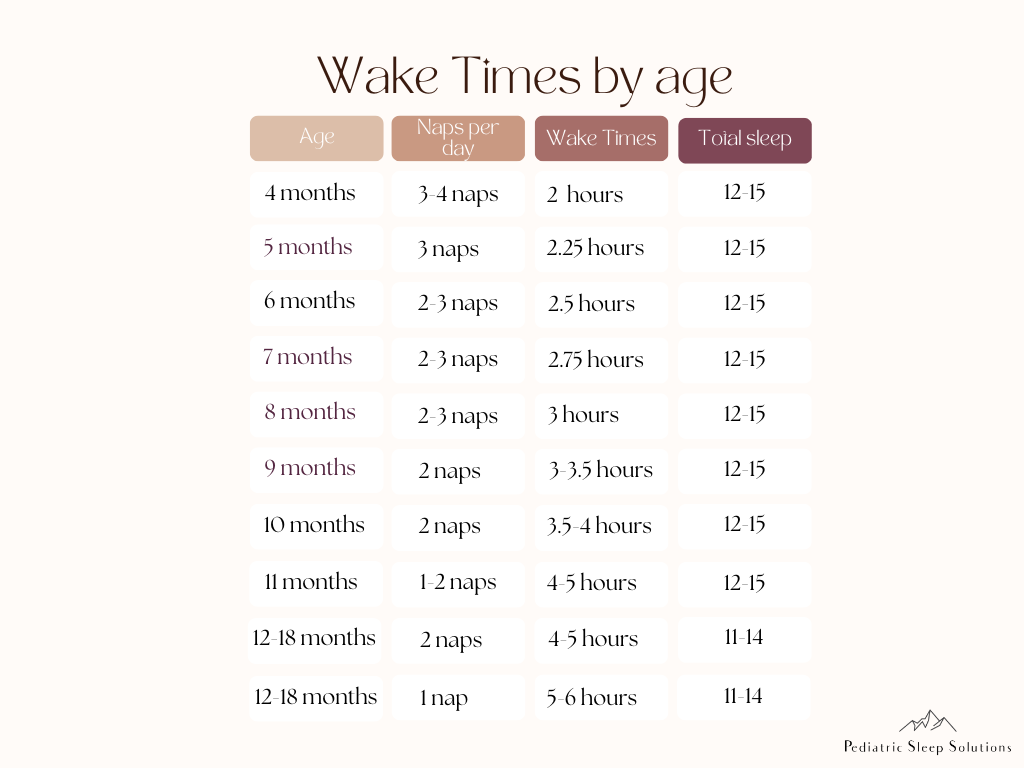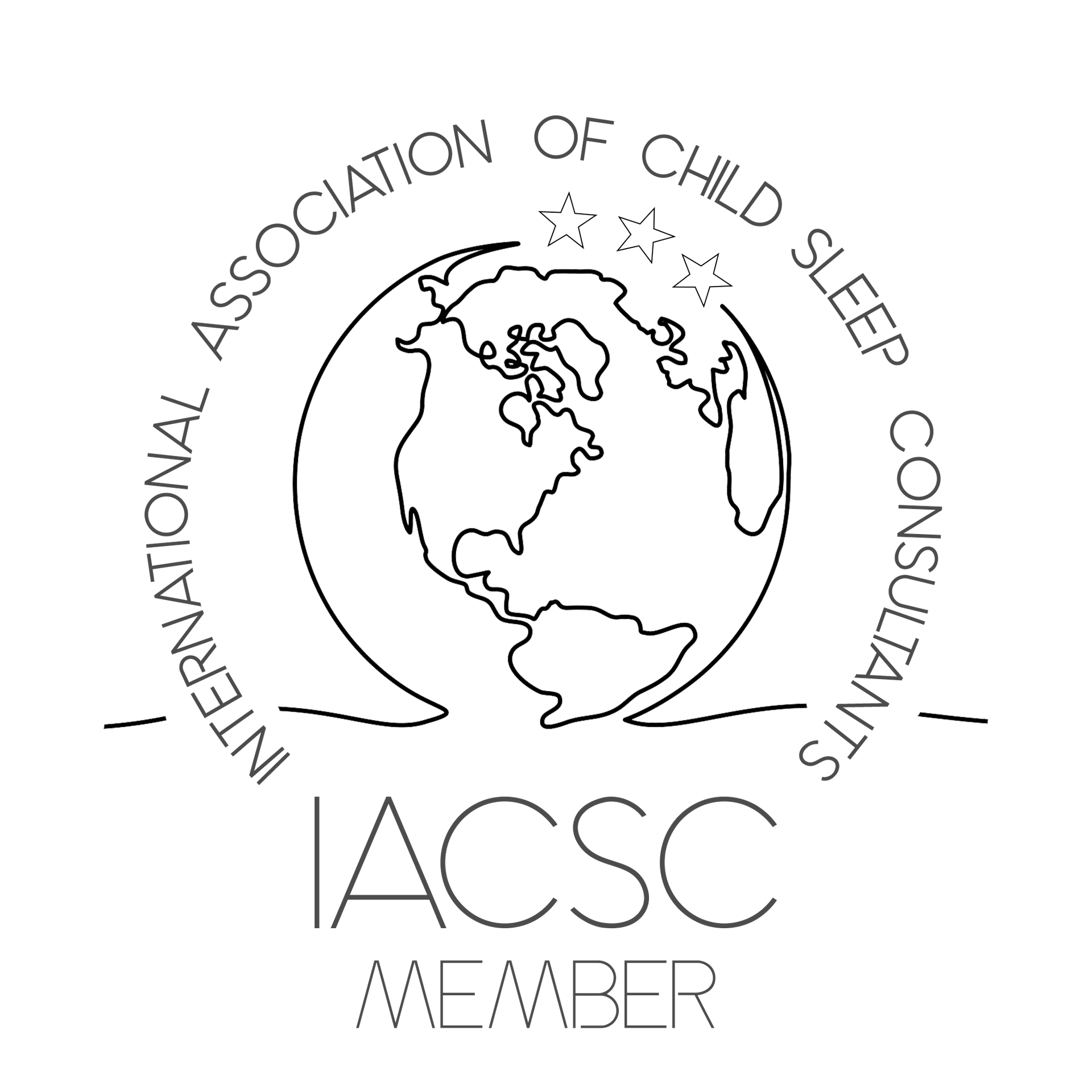Following a Wake Time Schedule

Can following a wake-times schedule improve your child's sleep?
As parents, some of us want our baby to fall asleep easily, some of us want our babies to be able to put themselves back to sleep when they wake up, and some just want a predictable schedule and baby in bed at a good time. These are all very common goals! But how exactly do we get there? Where is the best place to start? And how do we achieve something like this without a bunch of tears?
The first thing we need to talk about is wake windows. Wake windows can vary because every baby is different, BUT they’re still very close to this chart and often within 30 minutes of the recommended times. The reason we want to follow wake windows is because it gives us a good foundation for a healthy routine. A routine is the foundation of healthy sleep and if you want a baby that’s easy to put to sleep then building a predictable routine is vital.
Wake windows refer to the amount of time your baby is awake between naps, and they play a very important role in improving your baby’s sleep! Following wake windows allows us to ensure that your baby is achieving enough sleep and is not over-tired. A child that is over-tired and not achieving enough sleep usually struggles to be put down, wakes often and can even have a strong dependence on other props to help them fall asleep (being rocked, held, or fed to sleep).
When you find which wake window is age-appropriate for your baby, it’s important to be paying attention for different tired cues or signs that your baby is ready for sleep. Common cues include:
- Yawning
- Rubbing their eyes
- Fussiness
Don’t forget that these cues will likely start showing up within 30 minutes before or after that recommended wake window. Once you notice your baby’s sleep cues, it’s time to put them down for a nap!
Choosing to focus on wake windows and follow your baby's natural sleep cues can be quite simple and sometimes a small change like this is all that's needed to sort out their sleep troubles and ensure they are achieving enough restful sleep.
This is a great place to start if you feel like you’re struggling with your baby's schedule. Once a consistent routine has begun, it becomes easier for us to encourage other healthy habits. By focusing on small changes like these, instead of a bunch of changes at once, it’s much easier to avoid those tears!
Restful Baby Blog





